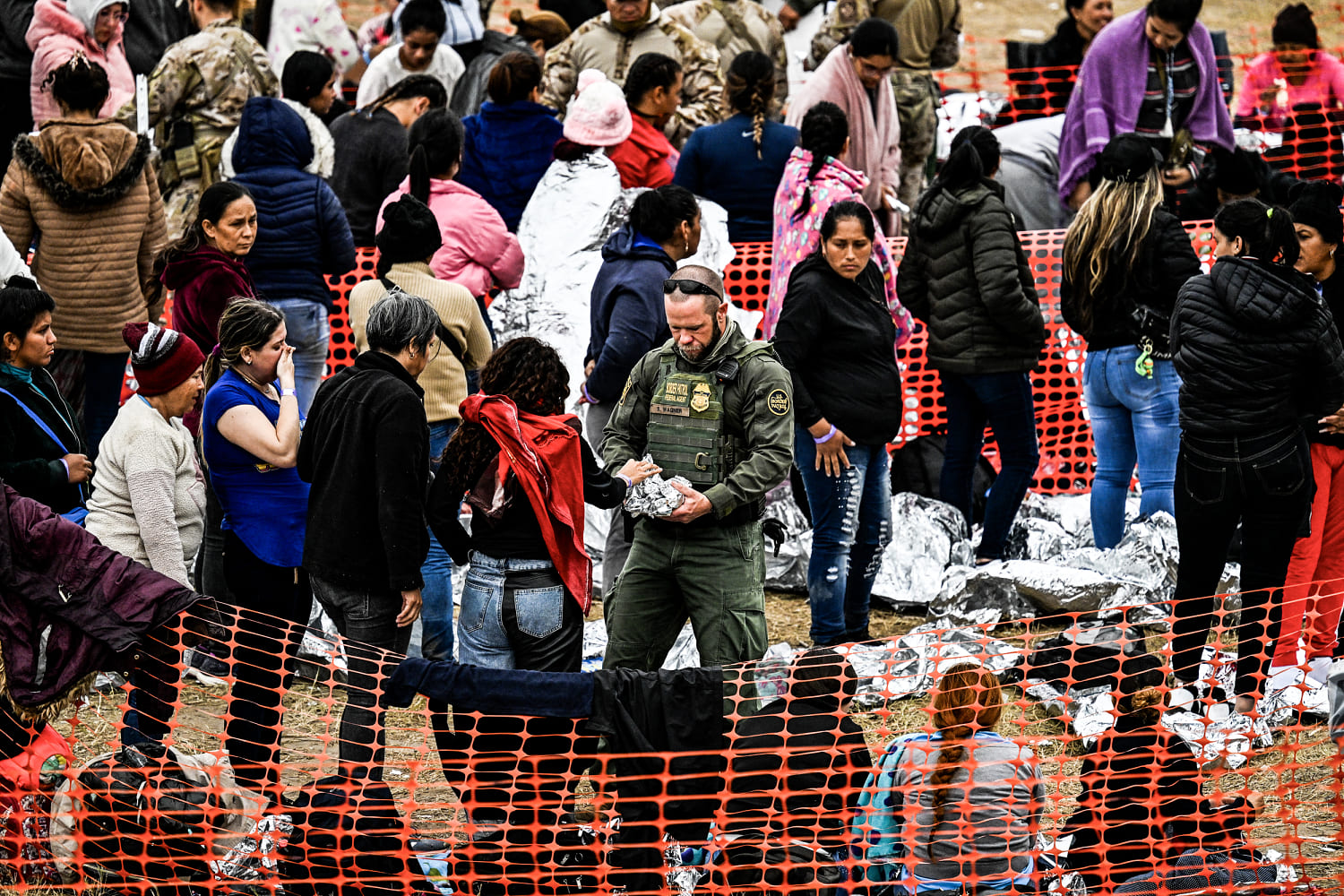
The Biden administration is increasingly leaning on Mexico to curb the record flow of migrants crossing into the U.S., but Mexico has its own lists of ambitious asks for the U.S., say officials from both governments familiar with the discussions.
Previous measures taken by the Biden administration to stem the migrant surge have led to only temporary dips in the numbers, and in late December, Homeland Security Secretary Alejandro Mayorkas and Secretary of State Antony Blinken went to Mexico to meet with Mexican President Andrés Manuel López Obrador to ask for greater assistance. Those conversations were “preliminary,” the officials said, and did not result in hard promises from either side.
In a press conference on Friday, López Obrador called on the U.S. to approve a plan that would deploy $20 billion to Latin American and Caribbean countries, suspend the U.S. blockade of Cuba, remove all sanctions against Venezuela and grant at least 10 million Hispanics living in the U.S. the right to remain and work legally.
All of those are extremely tall demands of an administration headed into a re-election campaign that may hinge on how firmly Biden is able to get control of the southern U.S. border, which saw a record 300,000 migrants processed by Customs and Border Protection in December.
Responding to those requests, a senior Biden administration official told NBC News that AMLO, as López Obrador is commonly called, “has a very ambitious agenda. For some of these things, we would need Congress to act. We share the vision that we need to lift up the region.”
The two countries are expected to continue talks in Washington later this month. Mexico brings significant leverage to the negotiations, the U.S. and Mexican officials said. López Obrador’s administration would prefer that President Joe Biden win re-election in November, given Donald Trump’s rhetoric and actions during his time in office. But Biden is quickly running out of options to fix a problem that is driving down his poll numbers without increased support from Mexico, three U.S. officials told NBC News.
On Capitol Hill, negotiations over border security measures between Republicans and Democrats continue into their second month with no clear breakthrough. And new asylum policies introduced by the Biden administration in May failed to deter migrants, as evidenced by the record surge.
To bring the numbers down, the Biden administration needs Mexico to let it push more non-Mexican immigrants back across the U.S. southern border, as the U.S. was able to do through early 2023.
During the Covid pandemic, the Trump and Biden administrations used a public health order known as Title 42 to push migrants back into Mexico without an asylum screening. During that policy, which ended in May, Mexico took back migrants over 1 million times each year for three years. Under current policies, Mexico has agreed to take back 30,000 migrants per month, but that is only 10% of December’s tally.
U.S. negotiators also want Mexico to step up enforcement on its southern border with Guatemala and deport more migrants who are apprehended within the country.
Mexico is willing to help the U.S. by increasing enforcement, one Mexican official told NBC News, though no numbers have been discussed so far. Mexico and the U.S. recently resumed deportation flights of Venezuelans, one of the top one or two nationalities now trying to cross into the U.S.
The senior administration official told NBC News that although there have been few flights so far, both countries expect to increase deportations to Venezuela this year. According to ICE flight data, there were 11 total deportation flights from the U.S. to Venezuela in 2023, but now there is one per week scheduled. Mexico said it restarted deportations to Venezuela on Dec. 30.
In return for its cooperation, the officials said, Mexico wants more financial aid for policing its borders. But Mexican officials said Mexico also wants the U.S. to show good faith about addressing the root causes of migration by investing more in programs to help Central and South American countries escape poverty. In many ways, Mexico sees itself as a byway country caught in the middle of a U.S. problem as most migrants are U.S.-bound, the senior administration official said.
The López Obrador administration did not respond to a request for comment.
While Title 42 was in effect, many shelters in northern Mexican cities like Juárez, Tijuana and Reynosa became overwhelmed with migrants, and many of them were forced onto the streets, where they were subjected to torture, extortion, rape and kidnapping. The legacy of Title 42 as well as Trump’s “Remain in Mexico” policy, which forced asylum-seekers to wait in camps in northern Mexico, left Mexico with depleted resources and an aversion to taking in more migrants than its cities can handle.
Migration began to grow after the lifting of Title 42, and by late 2023, Mexico’s version of U.S. Border Patrol, the National Institute of Migration, was running out of funds for enforcement.
The issue of immigration now looms so large between the U.S. and Mexico, said the officials, that talks about fentanyl smuggling, another priority, have been all but sidelined for the moment.
Source: | This article originally belongs to Nbcnews.com










